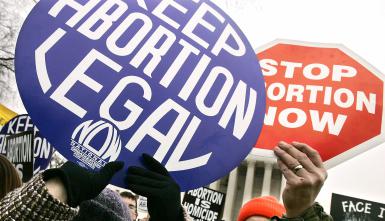
The Panic of Abortion
Abortion is a topic that is a major part of America’s current political environment. However, abortion is not a topic that sprung up overnight; instead, it has been a part of American culture and politics for longer than one may think. Within The Birth of a Movement by Ziad Munson, one sees that before the late 1960s, “abortion was debated by medical and legal professionals” and it was in the 1970s that “abortion [became] a grassroots concern in the country” (Munson 77). Both the initial medical/legal discussion and the later public concern over abortion can be classified as moral panics.
Within Moral Panics: Culture, Politics, and Social Construction by Goode and Ben-Yehuda, one sees that a moral panic is “an intense feeling of concern about a given threat… which is nonexistent or considerably less” and the “agents responsible for the threat… are classified as deviants” (Goode & Ben-Yehuda 149). These moral panics must contain a “heightened level of concern”, “increased hostility”, “consensus over the deviant,” “disproportionality,” and “volatility” (Goode & Ben-Yehuda 156-158). Before the 1960’s, abortion was a topic within the legal and medical communities, and there was initially a moral panic as “doctors made abortion an issue during the nineteenth century as a platform for asserting their monopoly on scientific medical knowledge” (Munson 78). In this way, there was a moral panic in that abortion was criminalized as it “was considered a form of murder” and this made deviant those who did choose an abortion (Munson 78).
One also sees a moral panic within the medical and legal field in the late 1950’s and early 1960’s as “advances in medical technology… and the increasing danger of and inequality in abortion services led some physicians, lawyers, and lawmakers to again argue for changes in the legal status of abortion” (Munson 80). This time the moral panic demonized those who performed unsafe abortions, and therefore sought to legalize the practice. However, the moral panics of thalidomide and the “outbreak of rubella” placed abortion as a “public, moral issue” which led into the moral panic that began in the 1970s, and this is the one that one still sees today (Munson 82).
In 1973, the Supreme Court ruled on Roe v. Wade that one has a constitutional right to an abortion. This led to a moral panic that caused “pro-life” and “pro-choice” interest groups to emerge, with each side actually doing little in “shifting the weight of the public opinion on abortion” (Munson 90). Therefore, the debate over abortion is one that is still widely debated with each side having heightened concern, hostility, and volatility, disproportionality in the effect of abortions, and consensus in viewing the other side as deviant.